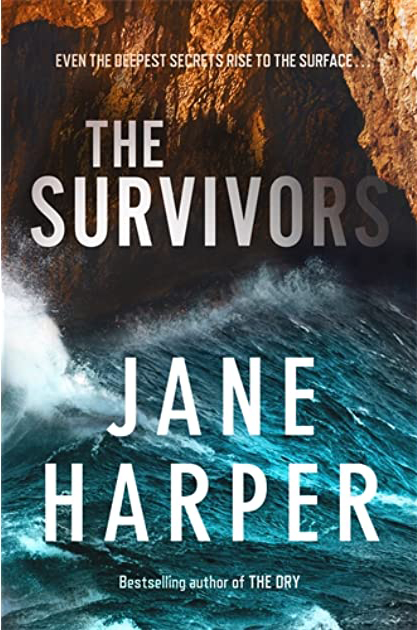Jane Harper, The Survivors, 2020
Review by Lee Horsley

Jane Harper’s The Survivors is an engrossing, suspenseful novel, with strong characters and an intensely realised landscape. It takes place in the tiny, isolated Tasmanian town of Evelyn Bay, sparsely populated except during the tourist season, when holidaymakers outnumber the town’s inhabitants.
Kieran, who spent his boyhood in the town, returns home twelve years on, with his partner and baby daughter. Like his closest boyhood friends and members of his family, he continues to struggle with memories of a past catastrophe, when a violent storm led to the death of two young men, including his own brother, as well as to the disappearance of a fourteen-year old girl – still an unsolved mystery. Echoes of the past seem to be everywhere when, soon after Kieran’s return, another young woman is found dead on the beach.
As the novel develops, Harper constructs a double perspective. The earlier coming of age story that played itself out at the time of the storm is repeatedly juxtaposed with the often painful recall of the sufferings of these younger selves. Each half of the narrative contains unanswered questions and unsolved crimes, and Harper’s novel is a powerful examination of the ways in which identities take shape under pressure of events.
The isolation of this small outpost is vividly imagined throughout. As characters stand looking out to sea, they see the vast nothingness of the ocean: “They’d stood side by side in silence… Somewhere invisible to the north lay mainland Australia, to the far south, Antarctica. In front of them, nothing, all the way to the horizon.” When he dives down into the icily cold water, Kieran feels “the water roaring past his ears and nothing but hundreds of kilometres of rolling sea separating him from the next nearest landmass.”
The novel’s title refers to three huge iron statues partially submerged in the sea, commemorating the loss of life in a long-ago shipwreck. They are always partially visible from the whale lookout, except when a storm makes the surge of the sea so overwhelming that all is obliterated:
“He could see the waves lapping high against The Survivors and suddenly it was twelve years ago and he was lost all over again. He scrambled in the water, his head twisting from the caves to the cliff path, trying to find his way out. He couldn’t see the bottom of the trail. It was submerged, he realised, and his world lurched until he wasn’t sure what was sky and what was sea.”

The Survivors is a taut mystery story that keeps readers guessing until the end. But it is also, like Harper’s earlier novels, a subtle, often moving exploration of the torment of loss, grief and guilt. As in her debut novel, The Dry (2016), she endows an extreme terrain with mythic dimensions. Past tragedies, psychological traumas and the unknowable, treacherous paths of the human subconscious are all written into the landscape of Evelyn Bay.
There are inextricable connections between human experience and the surrounding landscape, not only in the ever-present, destructive force of the sea but in the labyrinthine tunnels of the sea caves, in which we glimpse the inner struggles of characters who try to navigate the hazardous paths, sometimes getting hopelessly lost as their route spirals down into darkness, at other times glimpsing a tunnel “winding clear and dry ahead”: as Kieran reflects, “he had already spent too long mentally navigating the dark of those caves, wandering exhausted over the same old ground. Battling to change something that couldn’t be changed, instead of trying to find his way out to the light.” Harper’s skill as a novelist ensures that her embodiment of this obsessive inner battle stays in our minds long after reading The Survivors.
